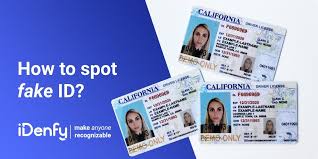identity verification
Outline and Content Expansion
Introduction: The Importance of Identity Verification in a Digital World
- Purpose: Introduce identity verification and its rising importance as global businesses transition online, encountering challenges related to security, privacy, and user trust.
- Background: Briefly explain the evolution of identity verification from traditional in-person checks to advanced digital systems.
- Thesis Statement: Assert the goal of the article – to provide an exhaustive overview of identity verification, addressing why it matters for businesses, individuals, and the future of secure digital transactions.
Section 1: Understanding Identity Verification
- 1.1 What is Identity Verification?
- Define identity verification and explain how it confirms an individual’s identity using various methods.
- 1.2 Types of Identity Verification:
- Document-based Verification: Describe traditional methods using passports, ID cards.
- Biometric Verification: Overview of biometrics such as fingerprint, facial recognition, iris scans.
- Knowledge-based Verification (KBA): Explain security questions and potential weaknesses.
- Multi-Factor Authentication (MFA): Discuss two-factor and three-factor authentication.
- 1.3 How Identity Verification Works:
- Walkthrough: Typical verification process steps, from capturing ID data to verification.
- Example: Use a common scenario, like onboarding to a financial service, to illustrate.
Section 2: Market Landscape and Trends in Identity Verification
- 2.1 Market Size and Growth:
- Current market statistics for identity verification services.
- Expected growth rates and market drivers (e.g., increase in cyber fraud, global compliance standards).
- 2.2 Major Industry Players:
- Overview of key companies (e.g., Jumio, Onfido, TransUnion).
- Short profiles, notable innovations, and services each company offers.
- 2.3 Emerging Trends:
- Biometric Advancements: Advancements in biometric recognition, such as facial and voice recognition.
- Artificial Intelligence & Machine Learning: How AI/ML improves verification accuracy, reduces fraud.
- Blockchain for Identity Verification: Prospects and potential of blockchain technology.
- Self-Sovereign Identity (SSI): New trend empowering users to control their own identities.
Section 3: The Need for Identity Verification
- 3.1 Combatting Identity Fraud:
- Discuss increasing rates of identity theft and fraud, particularly in finance and e-commerce.
- 3.2 Regulatory Compliance:
- KYC (Know Your Customer) and AML (Anti-Money Laundering) regulations that necessitate identity verification.
- How businesses use identity verification to comply with GDPR, CCPA, and other privacy laws.
- 3.3 Improving Customer Experience:
- Explain how quick and accurate identity verification can enhance the customer journey, especially in banking, e-commerce, and healthcare.
- 3.4 Risk Mitigation:
- Role in reducing chargebacks, preventing account takeovers, and minimizing data breaches.
Section 4: Key Features of Effective Identity Verification Solutions
- 4.1 Security and Data Protection:
- Importance of data encryption, secure transmission, and secure storage in protecting user data.
- 4.2 Real-time Verification:
- Benefits of instant verification for users and businesses.
- 4.3 Scalability:
- Discuss solutions' adaptability to handle increasing verification requests as companies grow.
- 4.4 Ease of Use:
- Intuitive user interface, ease of integration, and smooth customer onboarding experience.
- 4.5 Compliance and Reporting:
- Reporting tools to help companies meet compliance requirements, conduct audits, and generate reports.
Section 5: Technologies Behind Modern Identity Verification
- 5.1 Biometric Recognition Technology:
- Deep dive into facial recognition, fingerprint scans, and iris recognition technology.
- 5.2 Machine Learning and Artificial Intelligence:
- How AI analyzes patterns and enhances fraud detection.
- 5.3 Blockchain Technology:
- Explore blockchain’s potential in secure and decentralized identity storage.
- 5.4 Data Encryption and Privacy Protection:
- How advanced encryption protocols safeguard sensitive user data.
- 5.5 Cloud-Based Solutions:
- Advantages of cloud-based identity verification for storage, speed, and global access.
Section 6: Market Analysis
- 6.1 Industry-Specific Use Cases:
- Finance: Prevention of fraud in banks, online payment platforms.
- Healthcare: Securing patient data and verifying healthcare professionals.
- E-commerce: Ensuring secure transactions and reducing chargeback rates.
- Travel & Hospitality: Streamlining guest check-in and secure boarding processes.
- 6.2 Geographic Market Overview:
- Growth in North America, Europe, APAC, and emerging regions.
- Regional factors influencing adoption and regulatory landscape.
- 6.3 Competitive Analysis:
- Analysis of competitive strengths, weaknesses, opportunities, and threats (SWOT) in the identity verification industry.
Section 7: Target Audience for Identity Verification Solutions
- 7.1 B2B Audience:
- Companies across finance, e-commerce, healthcare, etc., requiring secure verification for compliance and customer safety.
- 7.2 B2C Audience:
- End-users looking for convenient and secure onboarding experiences.
- 7.3 Government and Public Sector:
- Public agencies handling citizen verification, public safety, and digital identity management.
- 7.4 Potential Pain Points:
- Explore common pain points of different user groups, such as data security concerns, ease of use, and speed of verification.
Section 8: Future of Identity Verification
- 8.1 Evolving Regulatory Landscape:
- Discuss potential regulatory changes affecting identity verification practices.
- 8.2 Advancements in AI and Biometrics:
- Future AI applications for fraud detection and precision in biometric recognition.
- 8.3 Rise of Digital Identity and Decentralized Solutions:
- Trends in digital wallets, identity ownership, and decentralized ID.
- 8.4 Challenges Ahead:
- Address challenges like balancing privacy with security, user acceptance, and technological limitations.
Conclusion: Why Identity Verification is Crucial for the Future
- Summarize the importance of identity verification for security, regulatory compliance, and customer trust.
- Final thoughts on how companies can stay ahead by adopting robust identity verification solutions.
- Call to action for businesses to evaluate and implement identity verification solutions suitable for their needs.
Related News
Read More >>
 identity verification
identity verification
In an era where digital transformation is reshaping industries, identity verification solutions are ...
 market analysis
market analysis
This comprehensive guide explores the essential role of market analysis in driving business success....
 Scannable Illinois Fake ID
Scannable Illinois Fake ID
Discover the advantages of a scannable Illinois fake ID. This in-depth guide will explore its featur...
 Alabama driver's license
Alabama driver's license
A comprehensive guide to understanding and obtaining an Alabama Driver’s License, covering requireme...